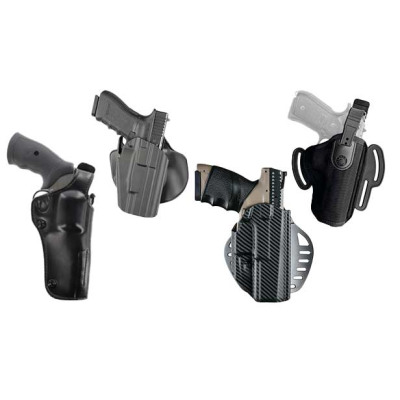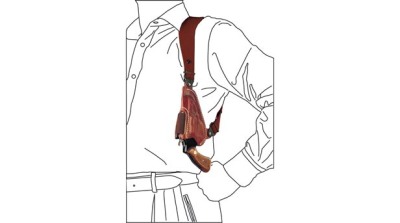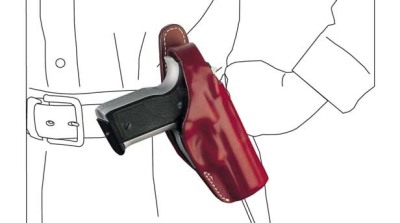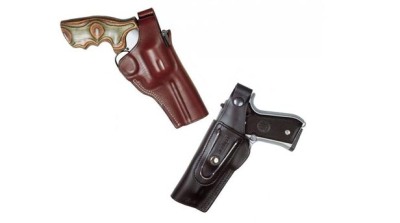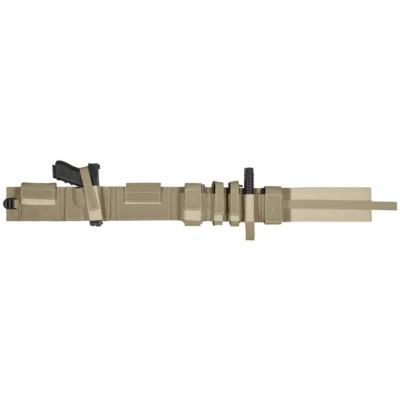Leather is a natural product and leather holsters require care and maintenance to last a lifetime. This is a small guide that should cover all the needs of anyone looking for tips, tricks and instructions on leather holsters.

Expand holster correctly:
Our leather holsters are attached to a specific weapon during manufacturing and can have a high degree of retention. The initial fit can be very tight and would require some stretching of the leather to allow for a smooth draw. Since leather is a natural material that absorbs moisture, it may harden during the drying phase. The holster is dyed, treated and oiled during the manufacturing process and therefore we can never predict how much moisture each piece of leather would absorb.
Accordingly, the holster may be stiff and tight at first, but that is all too normal. It would just need to be expanded. All you need is a plastic bag, your holster, and your gun. Before you start breaking in, be sure to loosen the retightening screws if your holster has them.
Wrap your gun in a thin plastic grocery bag, leave the handle open to ensure a tight grip, and slide the gun into the holster. Don't worry about pushing the gun in really hard. Leave it padded like this overnight, maybe a couple of days. Then pull the handgun out, take the plastic bag off, and try to holster the gun. It should loosen enough to allow you to use the gun more freely. If you still find it too tight, please repeat the process with the plastic bag until you are satisfied with the results. Alternatively, you can use a nylon stocking to help widen your holster.
Fuse tab wide without chemicals:
Follow these instructions if you have difficulty closing the gun with the holster:
Leather really needs attention and can't be widened in a few hours. It needs care and sometimes a few days if the leather is really tough. If you have trouble pulling the safety tab over the gun, do the following: Hold the loop and tighten it firmly while sliding the firearm into the holster. Keep pulling the loop until it extends just enough to lock it in place. You can twist and bend the strap to get a better effect. You can also stretch it when there is no weapon in the holster, but a weapon will increase the mass and force. If you want to do it without a weapon, just stretch it repeatedly. Note that moving the strap back and forth or twisting it can damage the leather. So be careful! This whole process stretches the leather and helps seat the gun in the holster. Leave the holster with the gun inside overnight. This would expand the safety loop. After a while, try pulling the safety loop around the gun. You should find it easier now. If not, repeat the process.
.jpeg)
Properly care for leather holsters:
Leather holsters are more susceptible to wear and damage than other holsters. Some care and attention will preserve their beauty and functionality for a long time.
Areas of the body with high salt content (sweat) can affect the leather quality. If possible, keep a barrier of clothing between yourself and the holster to protect the leather from possible perspiration.
Leather should be cleaned regularly to prevent long-term damage. It is best to use a soft cloth or microfiber cloth and dust the surface. A thin layer of a cleaning agent such as saddle soap/glycerin soap can be used to polish the holster surface. Another option is to lather the leather. Take a damp cloth and apply some moisturizing soap to it. Then rub the surface of the holster with it. Brush it on with a soft toothbrush, rinse it off and pad the leather with a dry cloth until it remains only slightly damp. Allow the product to air dry on its own. Direct sunlight and high heat can change the shape of the leather and will likely cause permanent damage to the leather.
Use special leather conditioners for additional care to prevent the holster from cracking and wrinkling.
It is recommended to clean and maintain the outer portion of the holster, the inside of the holster should only be cleaned if the items or dirt are interfering with a safe firearm draw. The gun itself forms the interior and does not require further intervention.
Store leather products in a cool, dry place when not in regular use.

Removing scratches:
Years of use and harsh environments can cause scratches on your holster. Some may consider it battle scars and others may prefer to remove it. So if you want to remove them, read on. Identify the type of scratch before you get to the point of removal.
A light scratch means that only the coating has been damaged and the leather underneath. This is the best case.
A deeper scratch means that the leather under the coating has been damaged. The leather fibres may be visible. This is worse than the first, but can be repaired.
A cut through the leather is the worst case, it goes through the whole holster and part of the weapon is visible. In this case it is not repairable, but don't worry, if you are under warranty everything is fine, just contact the manufacturer.
A minor scratch
Removing smaller scratches is relatively easy and you will quickly get used to it if you repeat it often. You will probably spend most of your time dealing with small scratches as these are the easiest to repair. The leather will "heal" itself in most cases, so you don't have to worry about affecting the appearance.
Method no. 1
Rub some olive oil, baby oil or saddle oil into the scratch. Apply it directly with a cotton bud or a cotton pad by rubbing it into the scratch. Also apply some of the oil in a circular motion. Let it sit for an hour, then dry it and wipe it off with a cloth. If it does not repair on the first try, repeat. Please also note that leather absorbs the oil and may become slightly darker.
Method no. 2
Apply lanolin to the scratch and rub it in with a cloth, possibly a cotton cloth. Rub it over the scratched area, perpendicular to the direction of the cut. This is a lengthy process and will take more time for the scratch to disappear. Please note that lanolin may also change the colour of the holster, so rub it on an older leather holster or an invisible area first.
Method No. 3
Apply shoe polish with a matching colour to the surface scratches of the holster. First apply it directly to the surface scratch with a clean cloth or cotton swab. Then rub the shoe polish onto the leather and remove it afterwards with a clean cloth. Please note that this process does not heal the scratches, but hides them. If you have not found the right colour, simply remove the applied polish, clean the holster, dry it and apply another coat with a better shade.
Deeper scratches
Deeper scratches may take a little longer to "heal" but the leather and holster function will not be affected in any way. Note that the scratch will not repair and heal completely, the scratch will remain visible as the fibre of the leather underneath has been damaged. These scratches are easily repaired using the following method without affecting the functionality of the holster:
Apply rubbing alcohol to the scratch. Be sure to clean the leather before applying the alcohol to maximise the effect. The alcohol dries quickly, so you can repeat the process every 10-15 minutes to achieve the desired look.
What you should and should not do with your leather holster
We can provide you with all the important information, but if you do not take these small but very important facts into account, you will have to maintain and repair the holster much more often. Please note that not only guns need to be cleaned and maintained regularly, but holsters do too.
Things you should do:
1
Clean the holster with a soft cloth and mild soap. A gun holster that regularly comes into contact with sweat may need to be treated as described above once a month.
2
Work soap and a little water into the leather and apply to the surface, rub in and wipe off with a soft cloth (once every 3-4 months).
3
Let the leather dry naturally in the air, without any artificial heat.
4
Use a small amount of a neutral leather cream or some cooking oil to slow down natural ageing of the leather.
Things you should not do:
1
Do not immerse or saturate your leather in water or other liquids as they saturate and soften the leather too much. It may cause the leather holster to lose its shape.
2
Do not dry your leather product with artificial heat (oven, hair dryer, direct sunlight).
3
Do not leave your leather products on a vehicle dashboard or otherwise exposed to the elements during the summer. Following our recommended care tips will allow you to get the maximum life from your leather products.





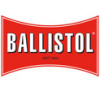










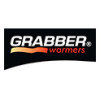

















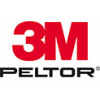
 Caldwell
Caldwell



